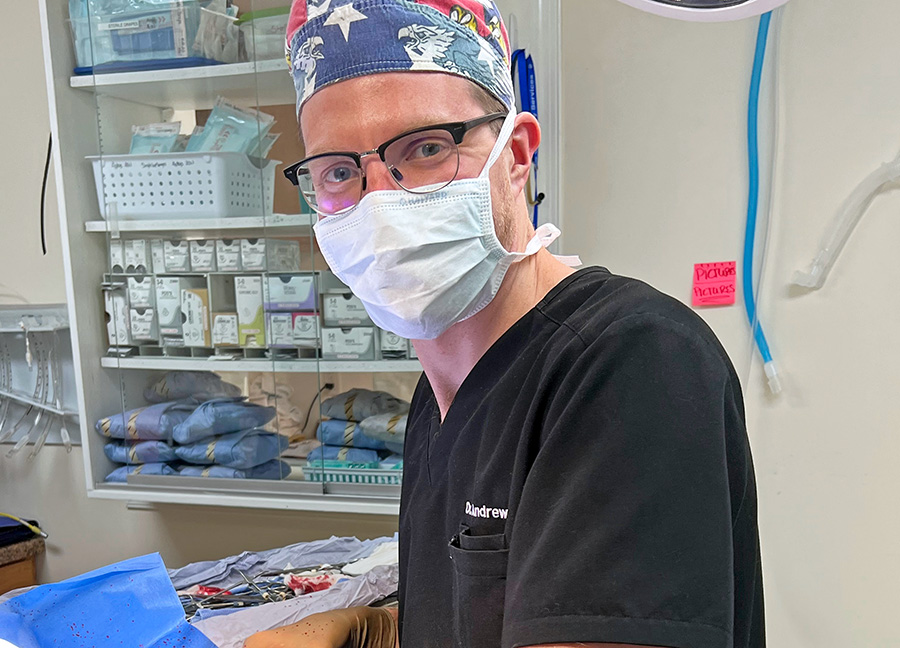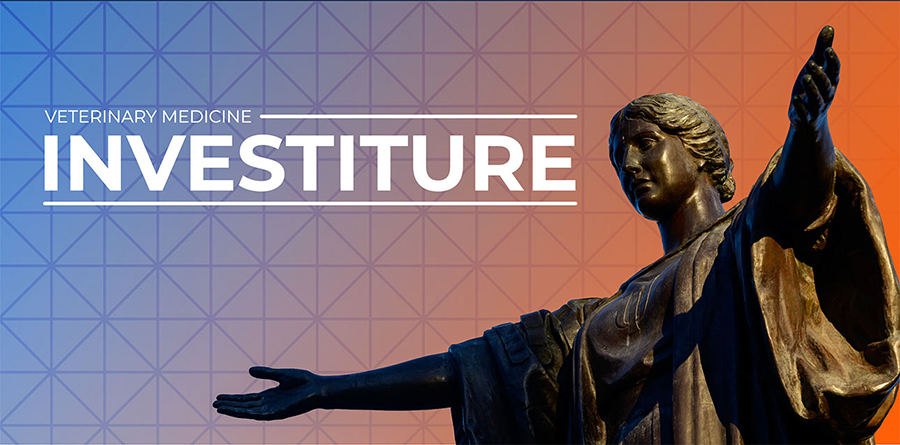We caught up with Dr. Bullis, a 2020 graduate of the College of Veterinary Medicine, after deciphering the clues he dropped about his veterinary alma mater (such as, third-year lectures “in a classroom designed like the nosebleed section of a stadium”) throughout his article in Slate magazine about euthanasia and other stressors of veterinary practice. The article appeared on February 5.
Turns out Dr. Bullis is a lifelong reader and avid journaler who uses writing to help him process troubling or puzzling situations, especially since he entered practice.
Although he did not set out to share his writing, he generously shared his thoughts with us about his Illinois education and his not-quite-three years of experience in practice.
Here, in his own words, are five (plus) things to know about him.
1: His recent article on Slate, detailing a Very Bad Day, helped make the emotional toll of veterinary practice understandable to non-veterinarians
The day I had to euthanize Lacey was very upsetting to me. I wrote at length about that, then kept coming back to the piece, editing it. I never intended to show anyone! But at some point, I decided to show it to my parents. I had been trying to convey to them what I do at work, but they never seemed to understand what vet med is about. I sent them the Lacey story as a way to convey some of the stresses of the job.
When I talked to them about it, their first response was: “We had no idea!” My mom told me she cried for a long time after reading it. And she told me to submit it for publication. My response was: “No, not gonna happen!”
But they persuaded me that other people need to know what it’s like. That the romanticized version of veterinary medicine is not the truth. Modern veterinary practice is a lot harder.
I worked with a professional editor who did all the legwork of submitting the article for publication. Slate said yes! They wanted some additional edits, including the statistics about suicide in the veterinary profession. Before the story went live, the editors at Slate advised me to set my personal social media accounts to private—because, they said, whenever they publish articles about children or animals, there can be unwanted backlash.
The response, however, has been amazing. Within a week of publication, around 30 veterinarians, mostly people I don’t know, had contacted me through the clinic where I work to thank me for the piece. There have been so many thoughtful public comments and exchanges posted online about the article.
2: His brief journey in veterinary medicine has already had its ups and downs
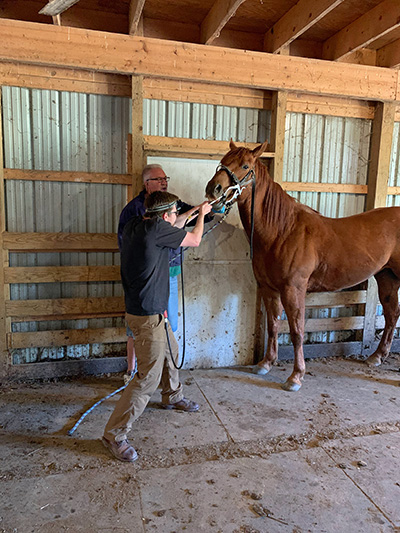
I grew up in upstate New York, and all of my experience was with equine vets at racetracks. I spent whole summers working 12-hour days on the track. So I started out wanting to be an equine veterinarian. Then in vet school I worked in Dr. Jim Lowe’s lab and with Dr. Brian Aldridge, and my interest switched to food animals.
By the time I graduated, my goal was to join a mixed practice. But to be honest, I almost felt that I wouldn’t like practice after going through the last year of veterinary school. We got to see a lot of interesting things as fourth-year vet students, but the atmosphere in the Veterinary Teaching Hospital was too stuffy and academic for me. I’m more laid back. I like to joke around.
Initially, being the new doctor in the practice felt the same. Then, when I got to manage cases on my own, it was like: “Whoa! This is really fun. I get to make decisions.” And the payoff when an animal gets better? That’s addicting. I realized this is way better than I had thought!
I took a job in Shippensburg, Pa., because it was a mixed practice. I’m still there, but there’s been a lot of change. It was a four-doctor practice, and they hired me and my 2020 classmate Dr. Emily Brydon at the same time, knowing that one of their established doctors would be leaving soon.
Within the next year and a half, the other three original doctors also left! Dr. Emily and I were the only two DVMs on staff. Suddenly we were THE vets. We spent a whole lot of time trying to figure stuff out and sleeping very little. The result is we became much better veterinarians really quickly. Eventually we hired a third vet and then a fourth.
Learning how to train new veterinarians, THAT is the hardest thing. You have to be able to take a step back. You’re good at certain skills, but you have to let them do it. And be very patient. That was painful for me.
Dr. Emily eventually took another job in our area, leaving me from the original stock. I have discovered that training new vets also means training staff, who are used to my way of doing things. I spend a lot of time explaining that every vet does things slightly differently and different is not necessarily wrong.
3: He says vet school is hard, and modern-day veterinary practice is a lot harder than people think it is
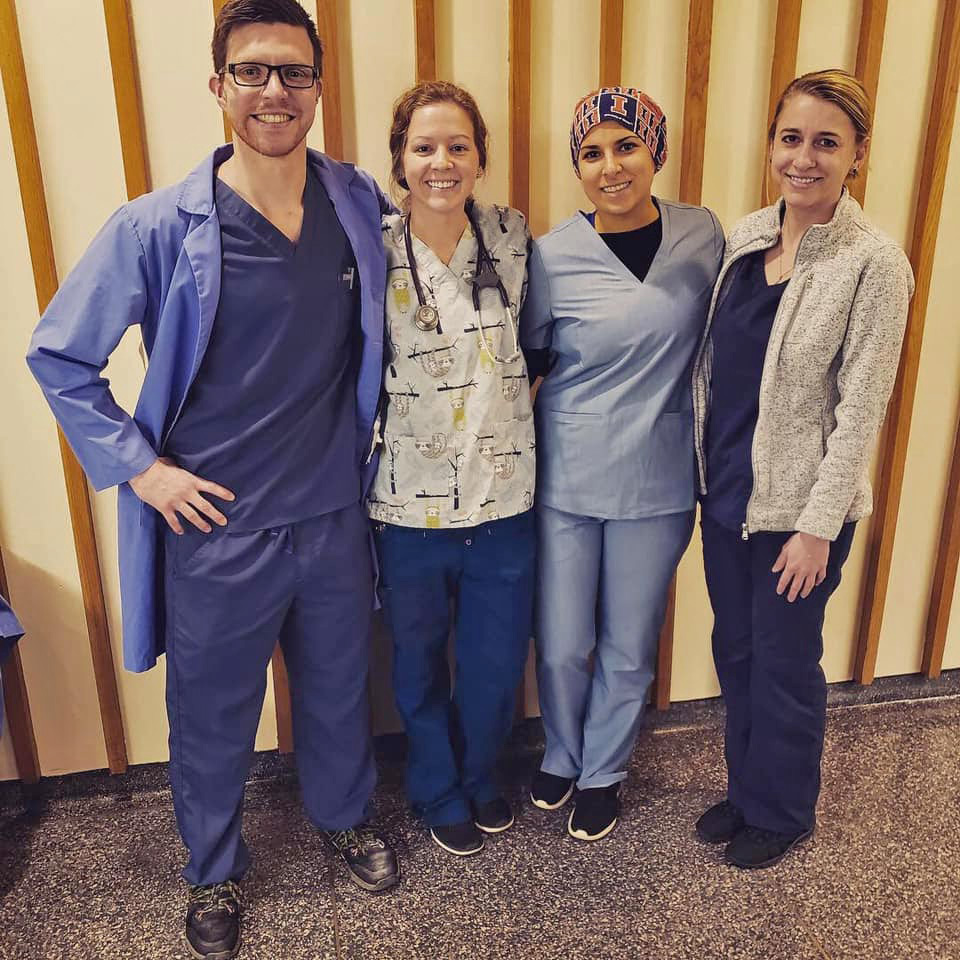
Vet school is hard no matter where you go. I remember Dr. Aldridge saying something to my class when we were second-year students that a lot of people did not appreciate hearing. He said: “You think what you are doing now is hard? Trust me, it is not.” Because the truth is, it just keeps getting harder. Third-years wish they had it as easy as second-years. Fourth-years look back at third year fondly. And then you’re in practice! And you’re faced with all kinds of concerns you were protected from as a student, like lawsuits, angry clients, and responsibility.
Vet students should know that euthanasia is a very real part of the job. You can’t escape this. Morally compromising situations arise. So prepare for it before you start practice. For example, a woman’s husband has died, and she isn’t able to handle the husband’s dog, so she wants it put down. Or a client finds an abandoned kitten by the road and asks you to put it down.
I hope that Dr. Lowe still gives that speech [described in the Slate article] to third-year students.
I can usually let the bad days go, but sometimes a euthanasia goes wrong, and it bothers me for a day or two. I feel like I’ve failed the animal and the client in those cases.
4: Despite all that, he loves his job
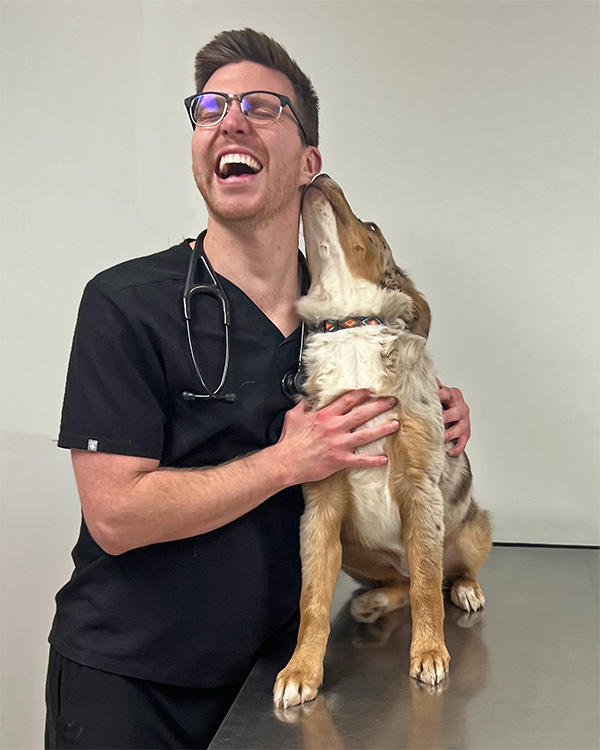
I really enjoy being in practice. Really!
I really like living in Pennsylvania. I wanted a change from where I grew up, about a 5.5-hour drive north in upstate New York. The clinic is in Shippensburg, which has a population of about 40,000, with lots of towns nearby. It’s rural, but not remote. At first, I didn’t think I would like small animal practice, but I enjoy being part of a community and working with the same clients, getting to know the whole family and all their animals.
I hope my article doesn’t give people the idea that being a veterinarian is all doom and gloom. I think it’s one of the most rewarding professions. Where else can you work with a client through the animal’s entire life, from delivering “babies” to giving first shots, first surgery, and all the other health needs through to death. And euthanasia can sometimes be a wonderful experience.
Even though there can be challenging or even terrible clients, even though there are dark days, you are making a difference. You can find strength in knowing you are doing something good.
5: He brings an open mind to the paradoxes that arise in veterinary practice
I do a lot of work with dog breeders in the area. Dog reproduction is not something we covered a lot in school. I know many people think you shouldn’t breed dogs, and I didn’t think I’d enjoy working with breeders.
It’s very similar to what Dr. Lowe does in pigs. I spend time on herd health—for example, treating an entire kennel that has giardia—rather than caring for individual dogs. I talk to the breeders about biosecurity, washing their hands, disease testing, and crossover.
Both pig farmers and dog breeders use a system of production: animals are born at one location, then sent to another location (“finishers” vs. “brokers”) to be marketed. I’ve acquired an understanding of the ins and outs of the industry. Breeders are challenging, but fun to work with. Now I really like that part of practice.
The thing is, dog breeders are going to run their business whether you approve of what they do or not. I think the animals deserve veterinary input into their care, and I find it rewarding to try to help in that way. I’ve seen breeders come a long way in improving the conditions for their animals since I’ve been working with them.
This is just an example to show that you can’t tell what you’ll do or where your career will take you.
And parting thoughts about the Illinois DVM program:
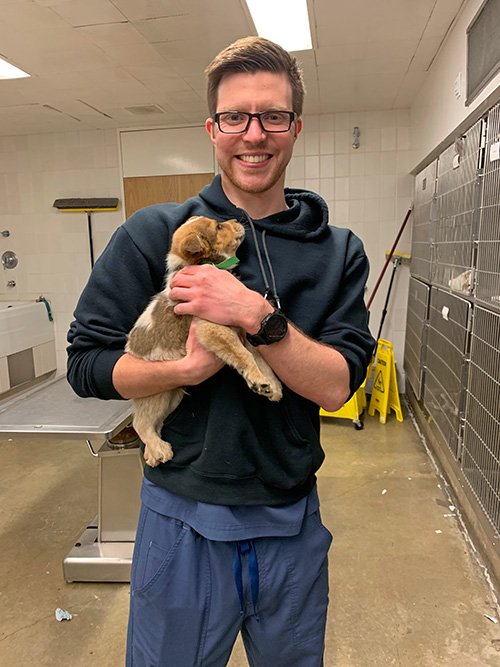
I liked Illinois a lot. I liked the integrated curriculum, so when you learn kidney physiology you are also learning about kidney disease.
I liked the fact that there was a midterm at four weeks and a final four weeks after that, instead of being bombarded with quizzes and exams for six or seven courses in a semester.
I liked having the clinical experiences in first and second year. It was helpful. For one thing, you got to see a lot of cool stuff. And you also knew what to expect as a fourth-year student, having shadowed the fourth-years. I hear from people who went to other schools that they are completely lost at the beginning of the clinical year.
And one more thing:
I’m happy to have people know that Dr. Lowe is the “ruthless pig vet” described in the article. That lecture was so impactful to me, learning that we have to get euthanasia right. No matter what happened in the animal’s life, it deserves to have a good death.

